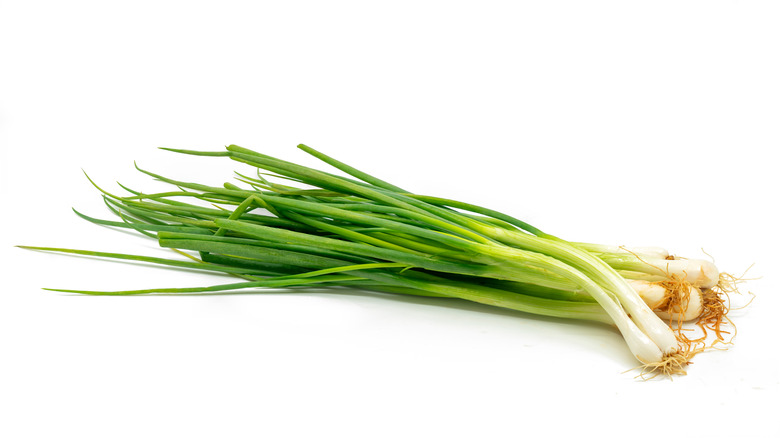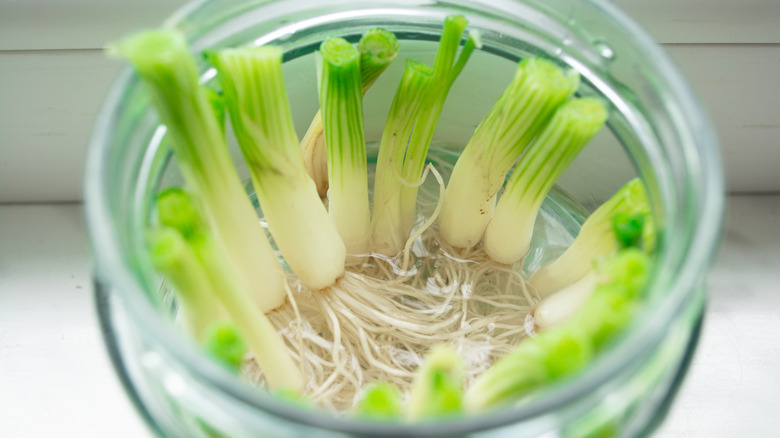Why You Should Stop Throwing Out Green Onion Roots
Let's face it: Fresh herbs make everything better. Whether you've chopped parsley into your enchiladas or added some dill to your Greek chicken recipe, fresh greens bring subtle flavors to a dish that just can't be matched. Both home and professional cooks rely on the freshest, most vibrant herbs for their meals. For those who try to stretch out their store-bought plant bundles by keeping them in the refrigerator or sticking their woody herbs into a glass of water to try and keep them alive for just a few more days, we have a trick for you to try.
Green onions are amazing on just about everything: pizza, omelets, stir fry, as a soup garnish, you name it! It has a soft, aromatic onion note that just brings a kick to any dish, and after you buy it from the store, you won't have to go back for more ... if you take the following tips!
Grow your own green onions
Not all of us have a green thumb, but honestly, when it comes to growing a green onion, you don't need any skill. Green onions (aka scallions) are visually divided into two parts: the bottom, which appears white and attaches to small, thin roots, and the green, grass-like leaf (via MasterClass). Most people buy the full plant, use up all the green parts, and then throw out the bottom white half. Do not do this, and if you already have, dig them out of your compost! You can use those little suckers to grow more green fronds.
So what should you do? Better Homes & Gardens suggests that after you've cut your green onion to the white of the stem, leaving a little green at the top, place the roots of the scallion in a glass filled with about an inch of water and set it on your window sill. Yep, that's it! See, no green thumb required. After every two days, replace the water in the glass, and once the growth and roots have sprouted substantially, feel free to pot the greens and keep using the herb to your heart's content!

